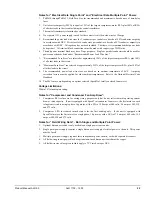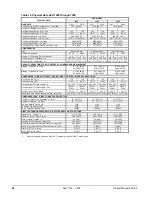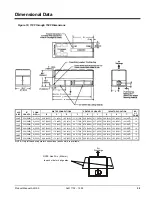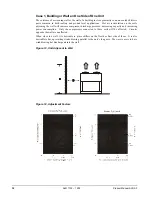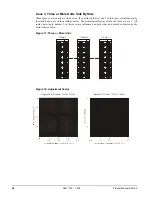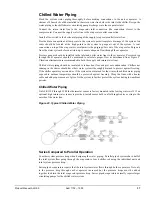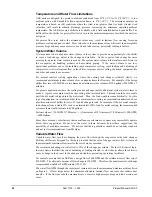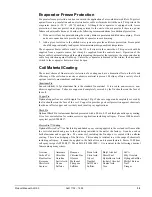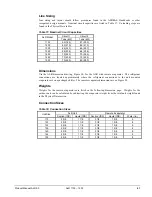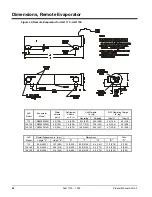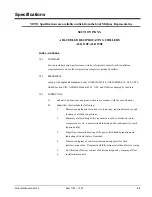
38
ALR 110F – 150F
Product Manual ALR2-3
Temperature and Water Flow Limitations
ALR units are designed to operate in ambient conditions from 30°F (-1°C) to 115°F (46°C). A low
ambient option with SpeedTrol allows operation down to 0°F (-18°C). The minimum ambient air
temperature is based on still conditions where the wind is not greater than five mph. Greater wind
velocities will result in reduced discharge pressure, increasing the minimum operating ambient
temperature. The ALR air-cooled chillers are available with a field installed hail and wind baffle. The
baffles allow the chiller to operate effectively down to the ambient temperature for which the unit was
designed.
Evaporator flow rates below the minimum values may result in laminar flow causing freeze-up
problems, scaling and poor control. Flow rates above the maximum values will result in unacceptable
pressure drops and may cause excessive nozzle and tube erosion, potentially leading to failure.
System Water Volume
It is important to have adequate water volume in the system to provide an opportunity for the chiller
to sense a load change, adjust to the change and stabilize. As the expected load change becomes
more rapid, a greater water volume is needed. The system water volume is the total amount of water in
the evaporator, air handling products and associated piping. If the water volume is too low,
operational problems can occur including rapid compressor cycling, rapid loading and unloading of
compressors, erratic refrigerant flow in the chiller, improper motor cooling, shortened equipment life
and other undesirable occurrences.
For normal comfort cooling applications where the cooling load changes relatively slowly, we
recommend a minimum system volume of seven minutes times the flow rate. For example, if the design
chiller flow rate is 300 GPM, we recommend a minimum system volume of 2100 gallons (300 GPM x 7
minutes).
For process applications where the cooling load can change rapidly, additional system water volume is
needed. A process example would be the cooling of hot metal objects. The load would be very stable
until the hot metal is dipped into the water tank. Then, the load would increase drastically. For this
type of application, we recommend that the normal comfort cooling recommendation addressed above
plus three minutes of ballast for every 10% quick change in load. For example, if the hot metal example
load changes from a stable 50% load to an immediate 100% load for metal cooling, the recommended
system volume would increase to 6600 gallons.
System volume = {300 GPM X 7 Minutes} + {(5 increment of 10% increase) X (3 Minutes) X 300 GPM}
= 6600 Gallons
Since there are many other factors that can influence performance, systems may successfully operate
below these suggestions. However, as the water volume decreases below these suggestions, the
possibility of problems increases. We believe that these guidelines should be an industry standard
and not just recommendations from McQuay.
Variable Water Flow
Variable water flow involves changing the water flow through the evaporator as the load changes.
McQuay chillers are designed for this duty provided that the rate of change in water flow is slow and
the minimum & maximum flow rates for the vessel are not exceeded.
The recommended change in water flow is 10% of the change per minute. For the ALR control logic,
there are timers that limit the rate of unloading or loading allowed. A slow change allows the chiller to
sense a change in load, react to the change and stabilize preventing operational problems.
For example, assume that an ALR has a design flow of 400 GPM and the minimum vessel flow rate of
250 GPM. The allowable amount of flow change is 150 GPM. Therefore, the maximum rate of change
recommended would be 15 GPM/minute (150 X .10).
The water flow GPM through the vessel must remain between the minimum and maximum values listed
on Figure 5. If flow drops below the minimum allowable, laminar flow can occur that reduces heat
transfer. If the flow exceeds the maximum rate, excessive high pressure drops and tube erosion can
occur.


